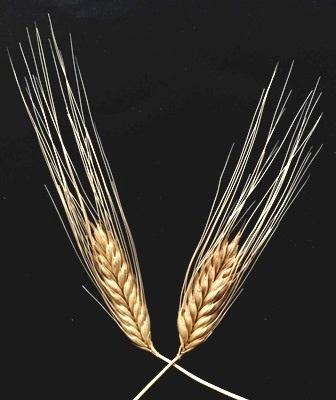Meri Shalamberidze
Our main aim is to learn Triticum timopheevii as Georgian local endemic, Its origin and distribution area in Racha-Lechkhumi, estimation of species for todays’s situation, mapping (Arc-Gis ver. 10.2) and informing IUCN for confirming the status of conservation. We also seek to spread appreciation for this species with local people and pupils, by holding the instructive presentations, excursions and practical work (collecting materials, making herbarium specimens and seed conservation in which the local people will take part).These activities will help local people to get more theoretical knowledge and practical experience about local endemic-wheat with characteristic and ex-situ conservation-reintroduction.

Triticum timopheevii Zhuk. © Meri Shalamberidze,2017.
Our plan includes three main types of work.
• First part includes learning and estimating the research region where
Triticum timopheevii has arisen, which means site selection, taking the soil samples, talking with local people and holding the research on chosen site. The research comprises: sowing the T. timopheevii and monitoring the developing process (phenological monitoring), also comparing samples which will be sowed one hand the experimental plot the Botanical Garden of Tbilisi and other hand on the place where it has arisen.
• Second part: for the instructive arrangement we are planning to held seminars, to show documental film (the films talking and showing about Georgia’s endemic wheat species arrangement and ex-situ conservation), excursions and holding presentations. During the seminars we would give detailed information about the origin, importance and value of this species, to the pupils and local people.
We would pay attention on about the problems raised around this species and the ways of solving the problems. During the excursions pupils will have ability to acquaintance will practical work, which comprise cut tasting, sowing, making herbarium, seed processing techniques and conservation procedures. Seminars and excursions will help us nowadays to get interested the pupils and popularize the cultural flora.
• Third part of our plan represents holding the conservative procedures, which will be oriented on the reintroduction and ex-situ conservation of
T. timopheevii. In close collaboration with local people and pupils we would be able to return this species on the experimental plots, which we think will be the fundament of the great job for future. With colored brochures we would establish short and important information about T. timopheevii. The schools with whom we would have tight connections we will give posters and for active and interested pupils T-shirts and certificate with Rufford logo.